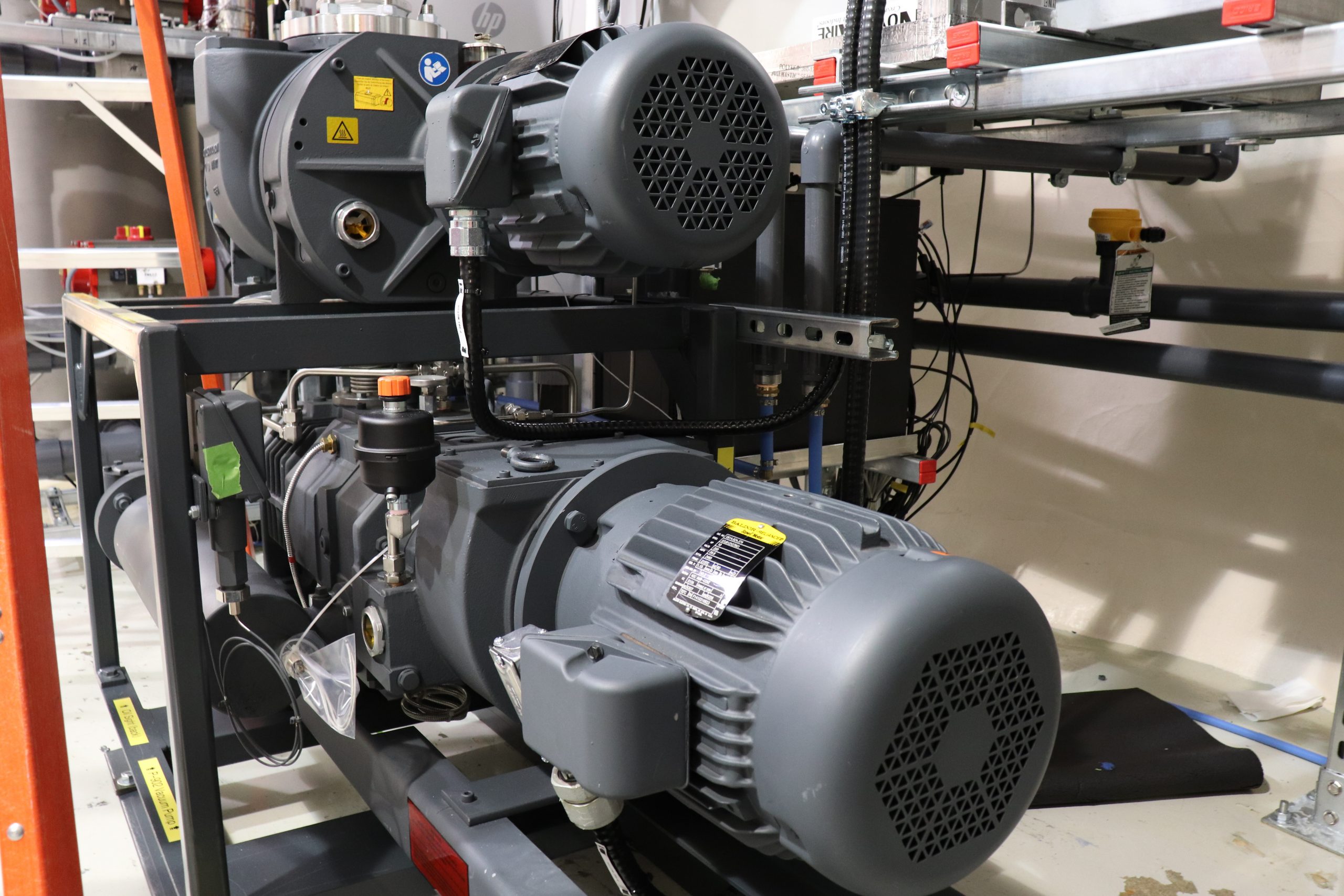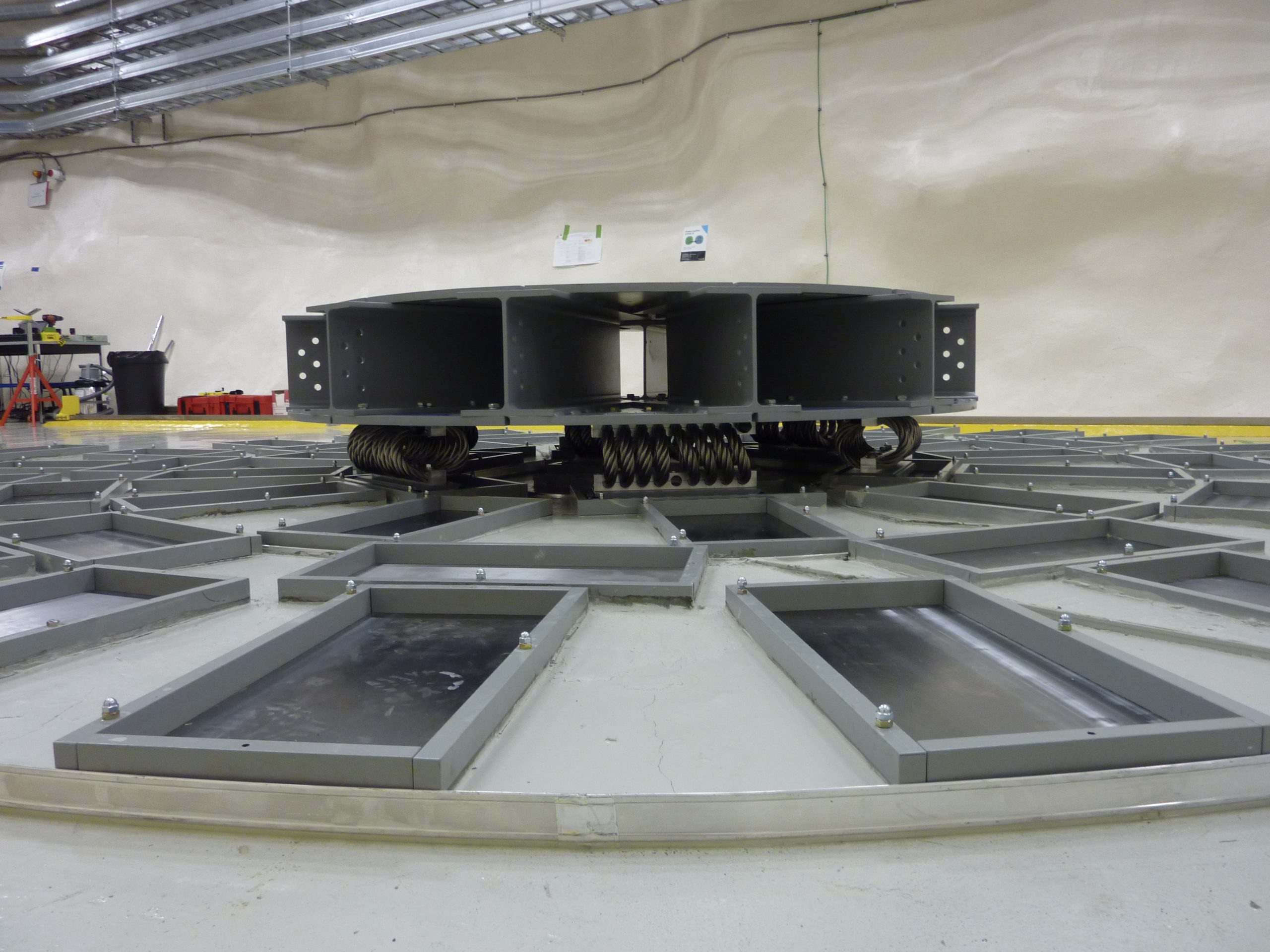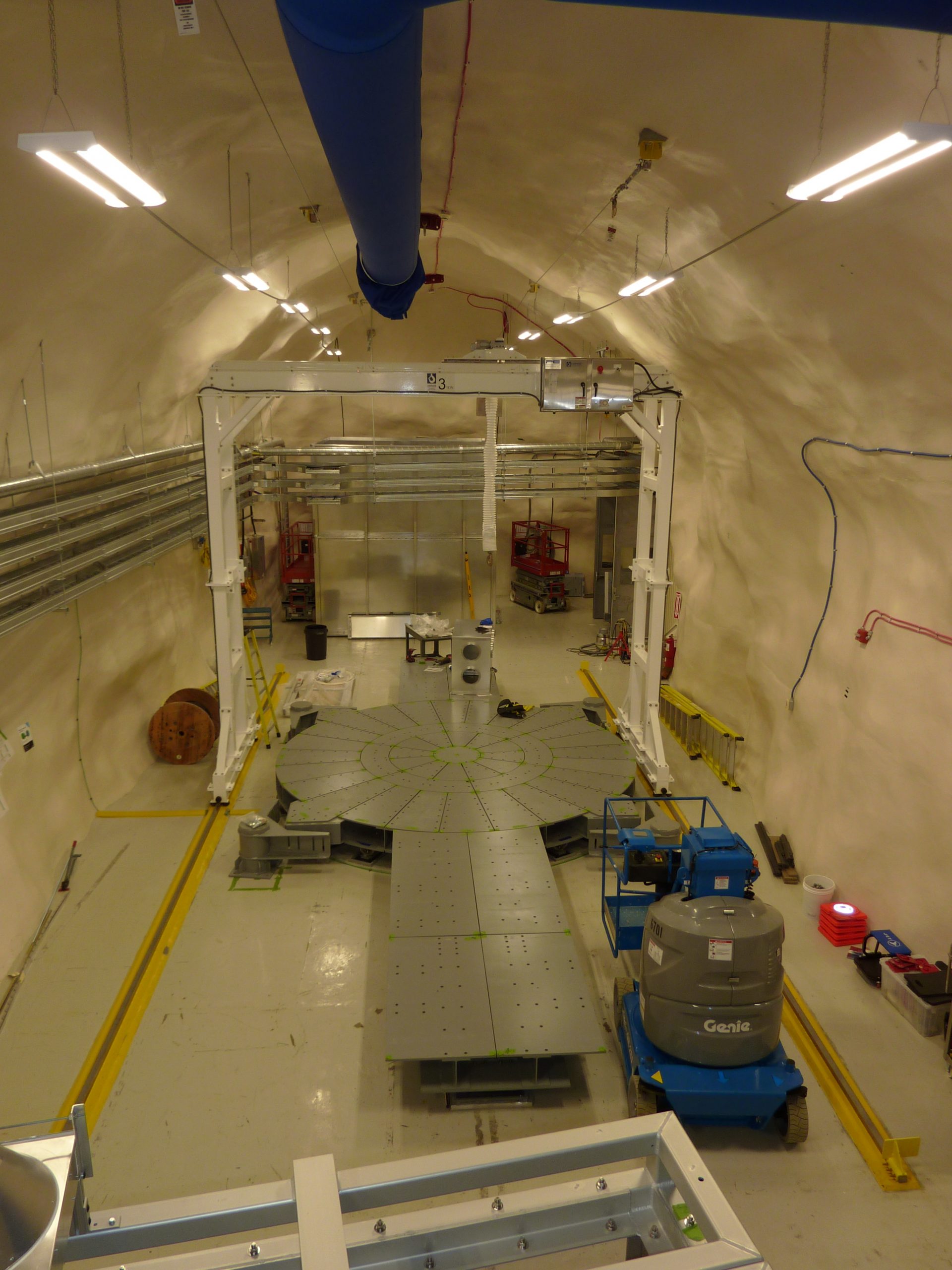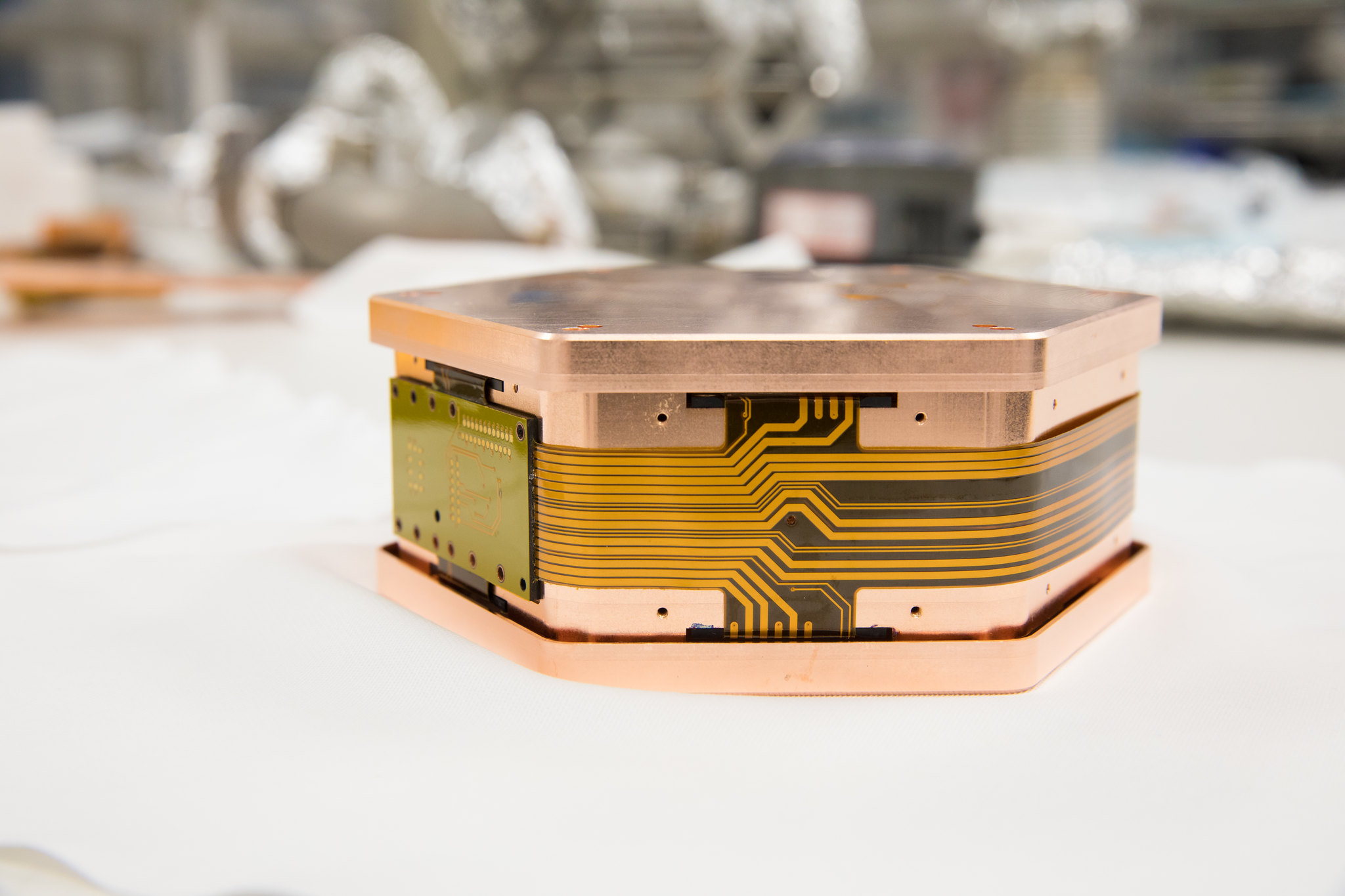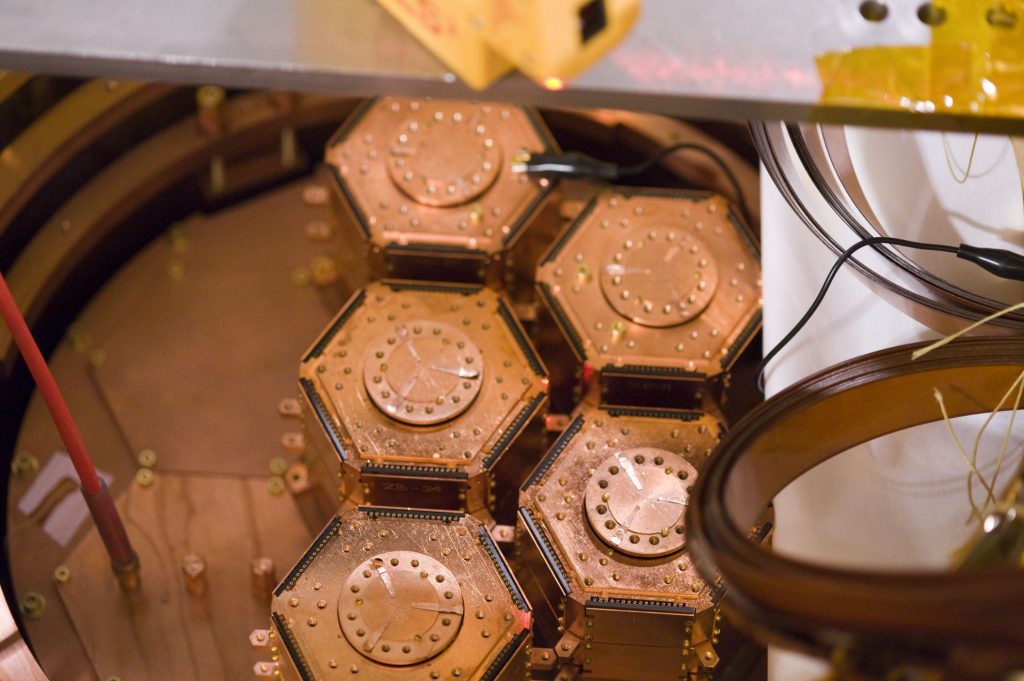
SuperCDMS
SuperCDMS uses silicon and germanium crystals to detect dark matter. When a dark matter particle hits the crystals, it deposits a small amount of energy in them, which can be measured. The crystals are arranged in towers and connected to electronics that monitor the data, looking for an interaction.
Did you know?
- The crystals are kept at extremely low temperatures to reduce thermal noise created by the crystals themselves. SuperCDMS will operate at 15 milliKelvin (absolute zero is 0 Kelvin).
- SuperCDMS is designed to look for ‘light dark matter’: in this case, light refers to its mass and dark refers to it being impossible to see.
- Each of the germanium and silicon crystals (10 cm across) has 1000 sensors on each side to detect energy from interactions.
